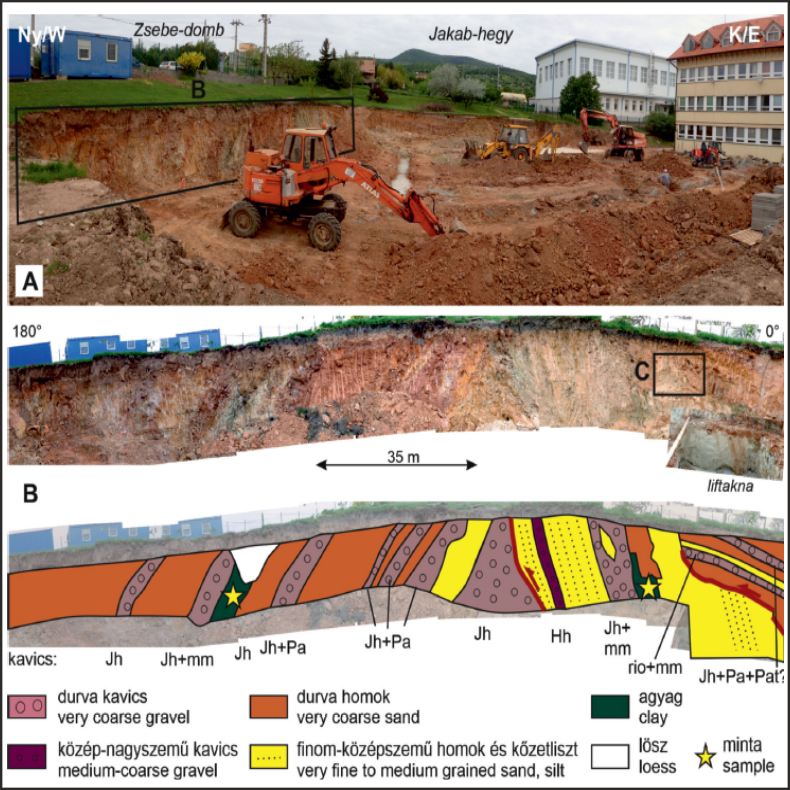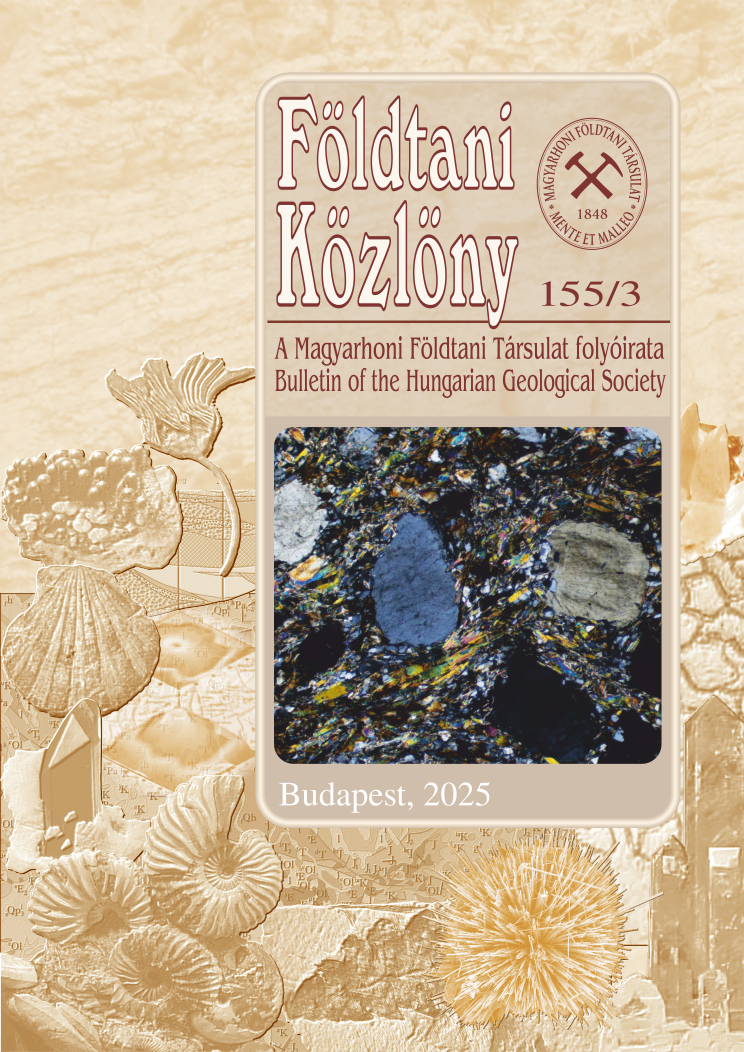Data on the Neogene activity of the Mecsek Mountains frontal fault zone in Pécs (SW Hungary)
Abstract
The Mecsekalja Dislocation Zone forming the southern – southeastern margin of the Mecsek Mts. is a complex fault zone that reactivated several times. We studied examining temporary outcrops within the fault zone in the city of Pécs to gain information on Neogene tectonic activity. We constrained the age of the exposed rocks using lithological analogies, micropaleontological investigations and mollusc biostratigraphy, and identified lower Sarmatian sediments as well as those deposited in two time intervals within the Pannonian. The observed deformations – tilting, folds, mostly reverse faults, basement overthrusting – refer to NNW–SSE compression. Induced by a relatively stable stress field, one or two early Sarmatian and three or four later deformation events could be identified: before, during and after the late Pannonian sedimentation (8–6.5 Ma). In the Pannonian, movements certainly took place after 10–9.6 Ma, but Sarmatian sediments possibly deformed (also) before that time. While in the Sarmatian most of the Pannonian Basin underwent active rifting, the Mecsek experienced compression. No extensional deformation could be detected in the area in the last 10 million years, basin inversion seems to have started here in the first half of the Pannonian age. The deformation of resistant coarse sediment in the western part of Pécs could influence modern topography.
















